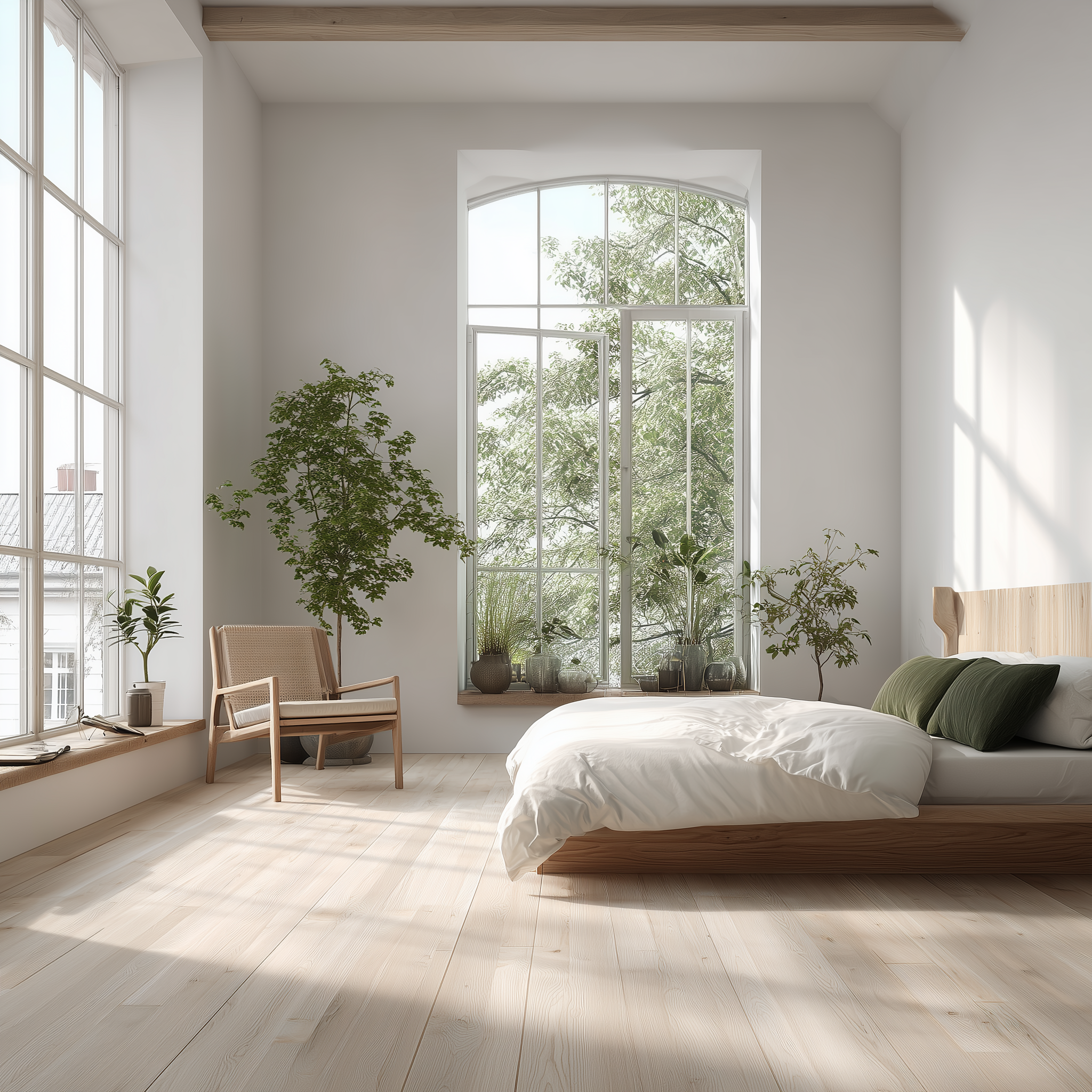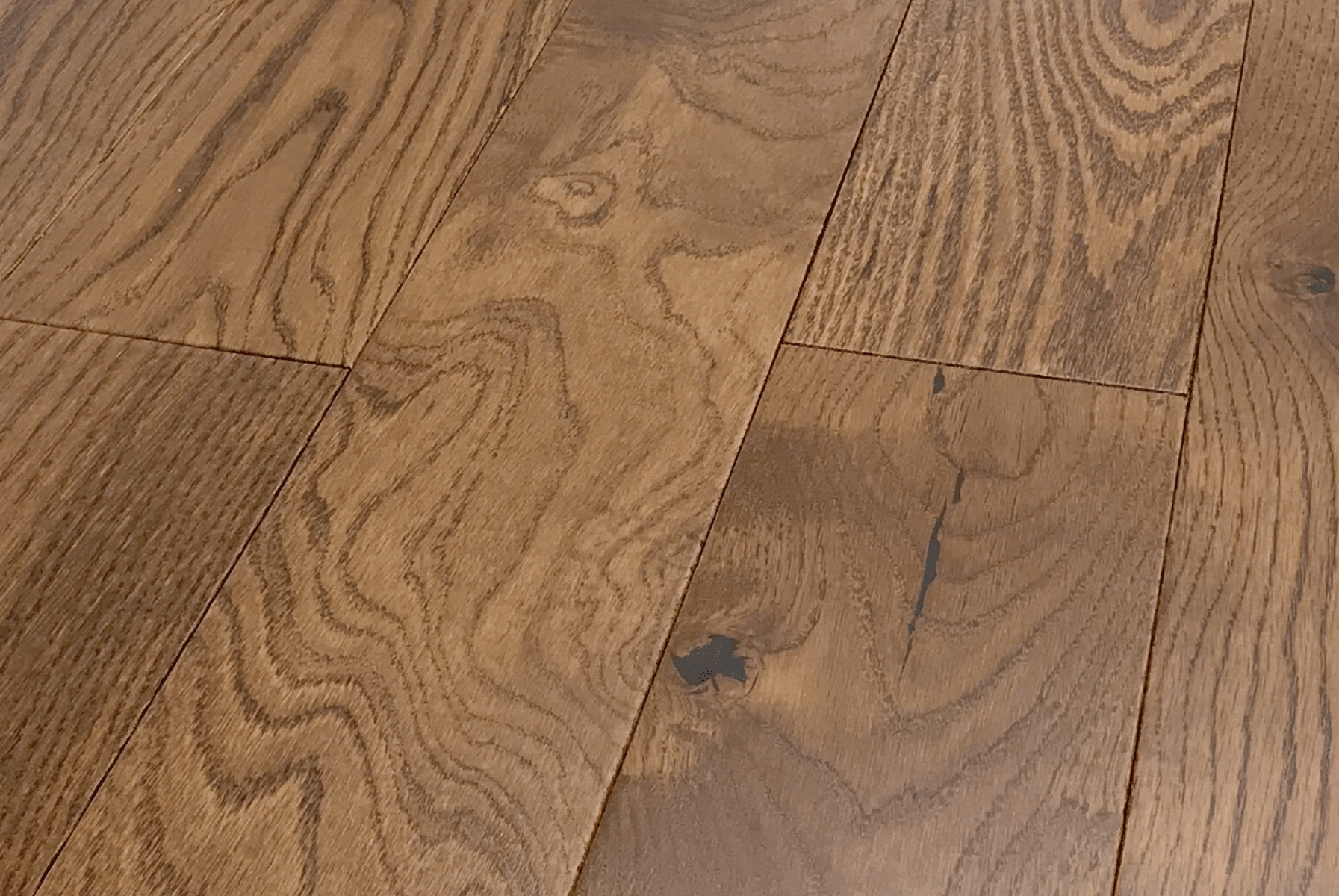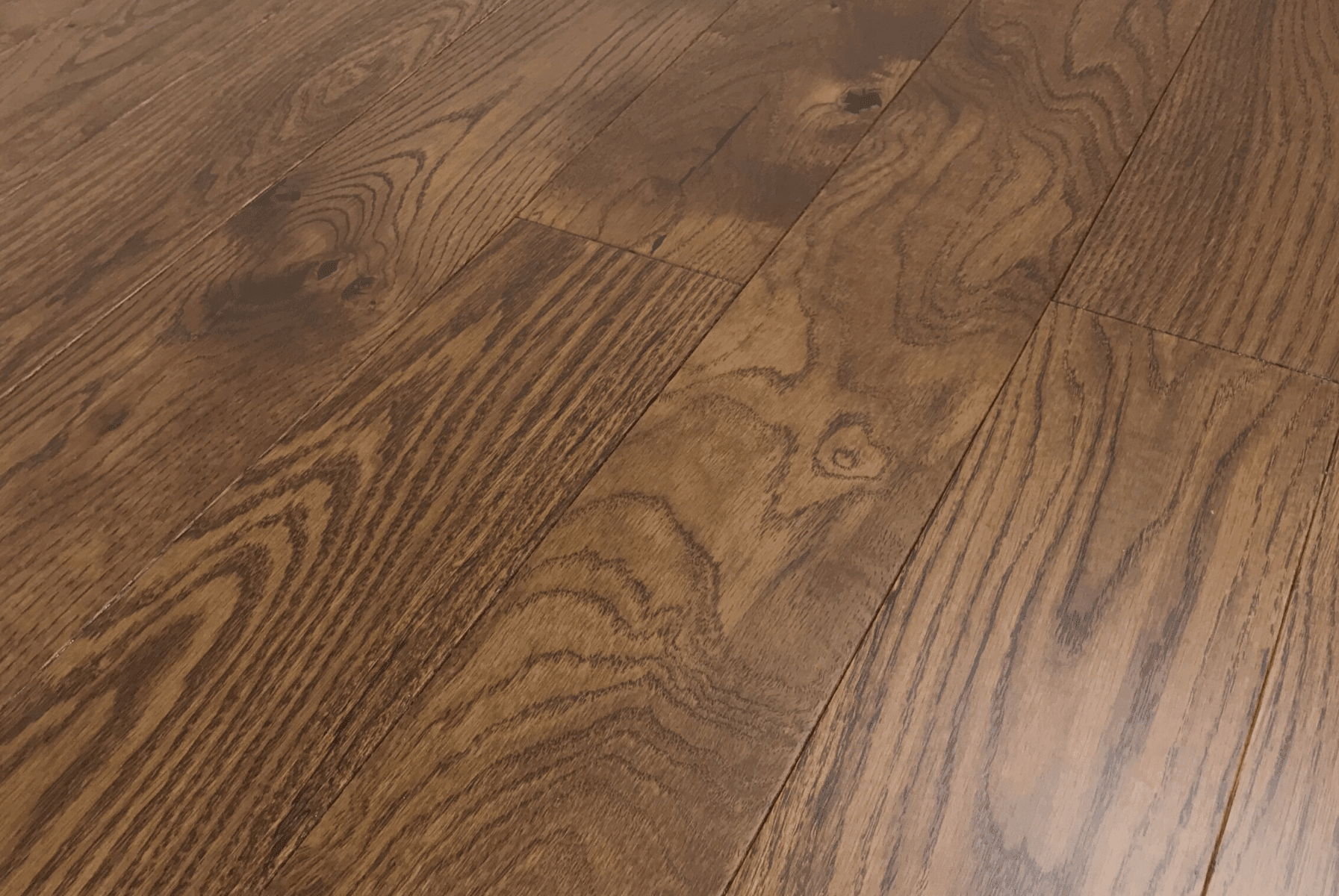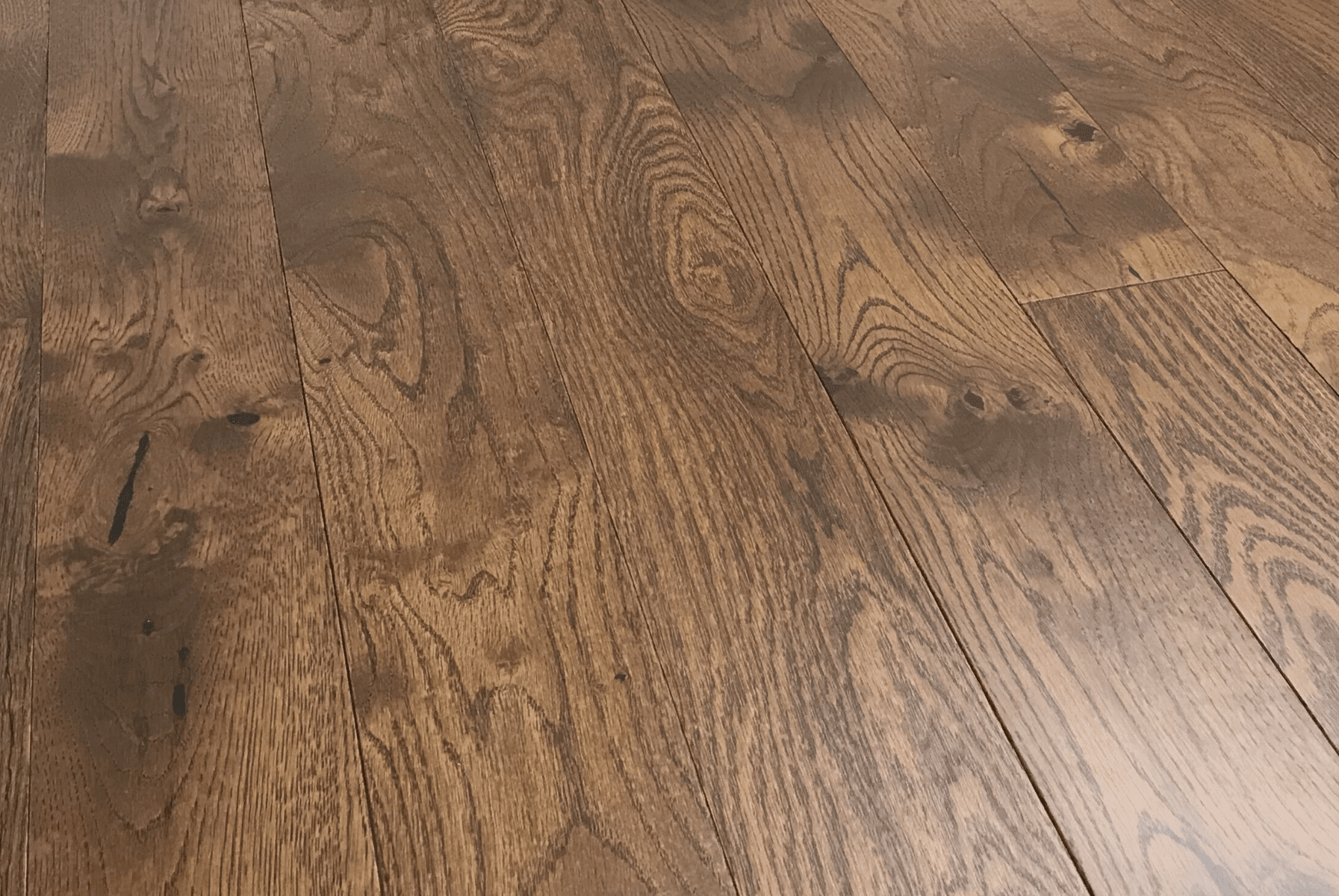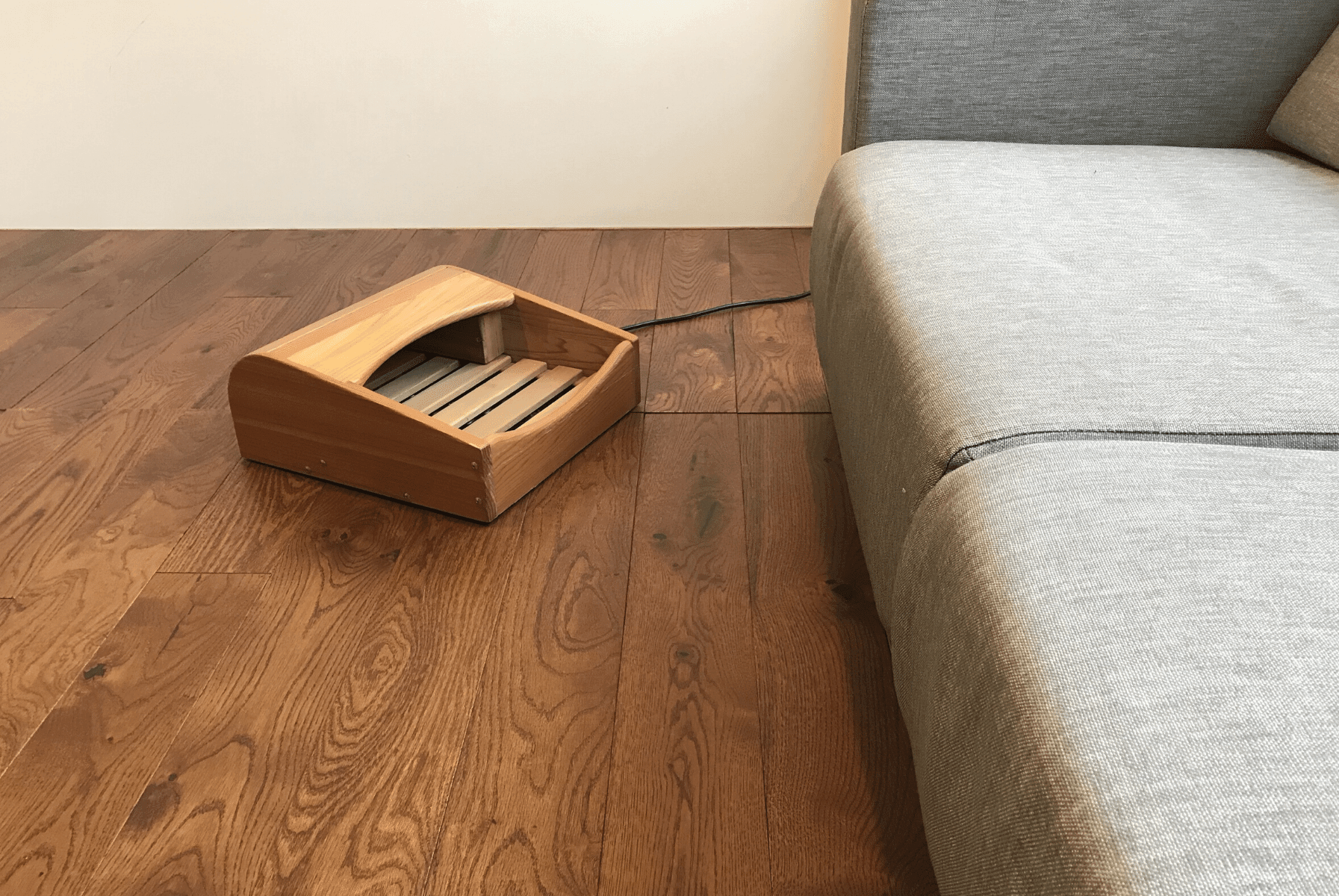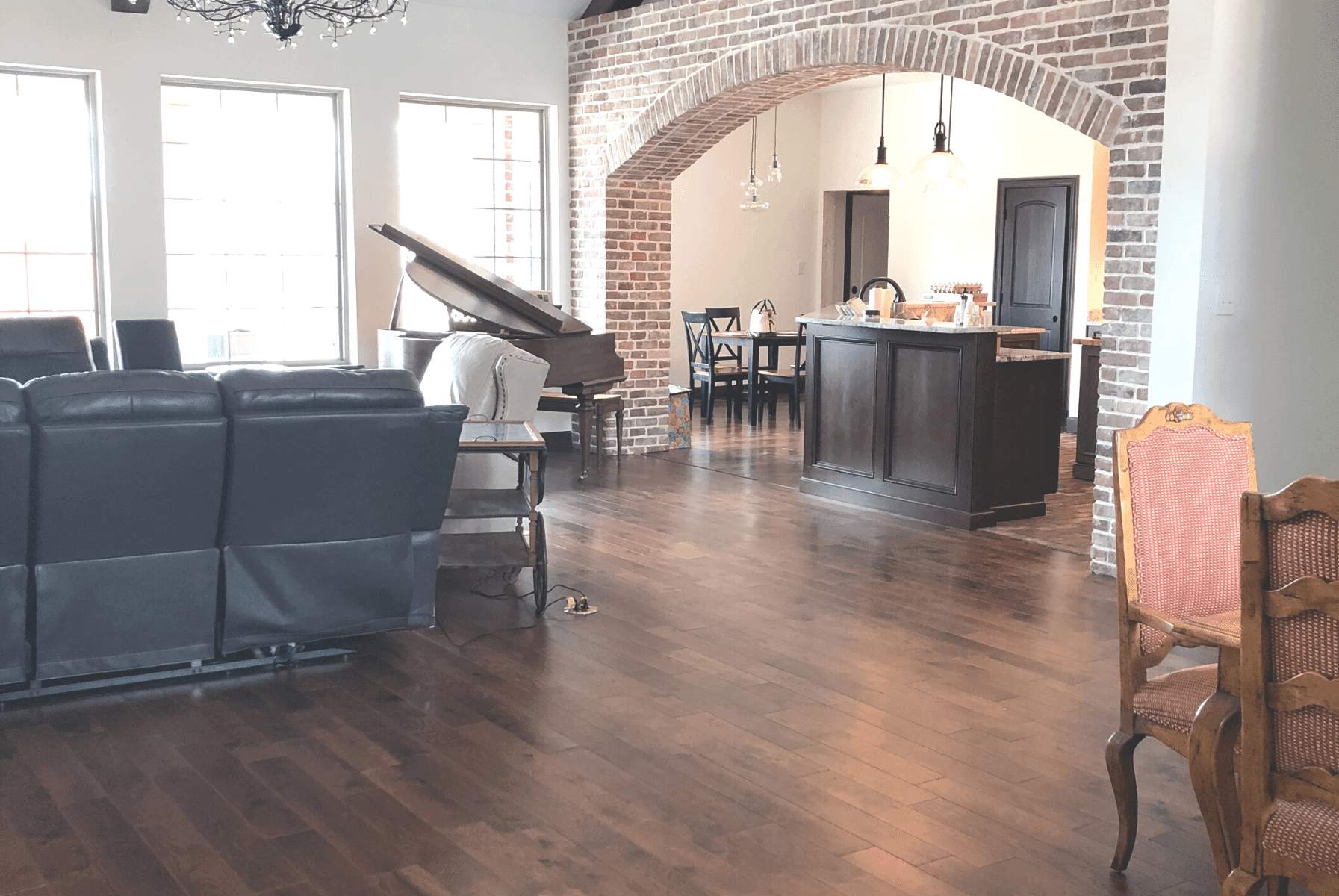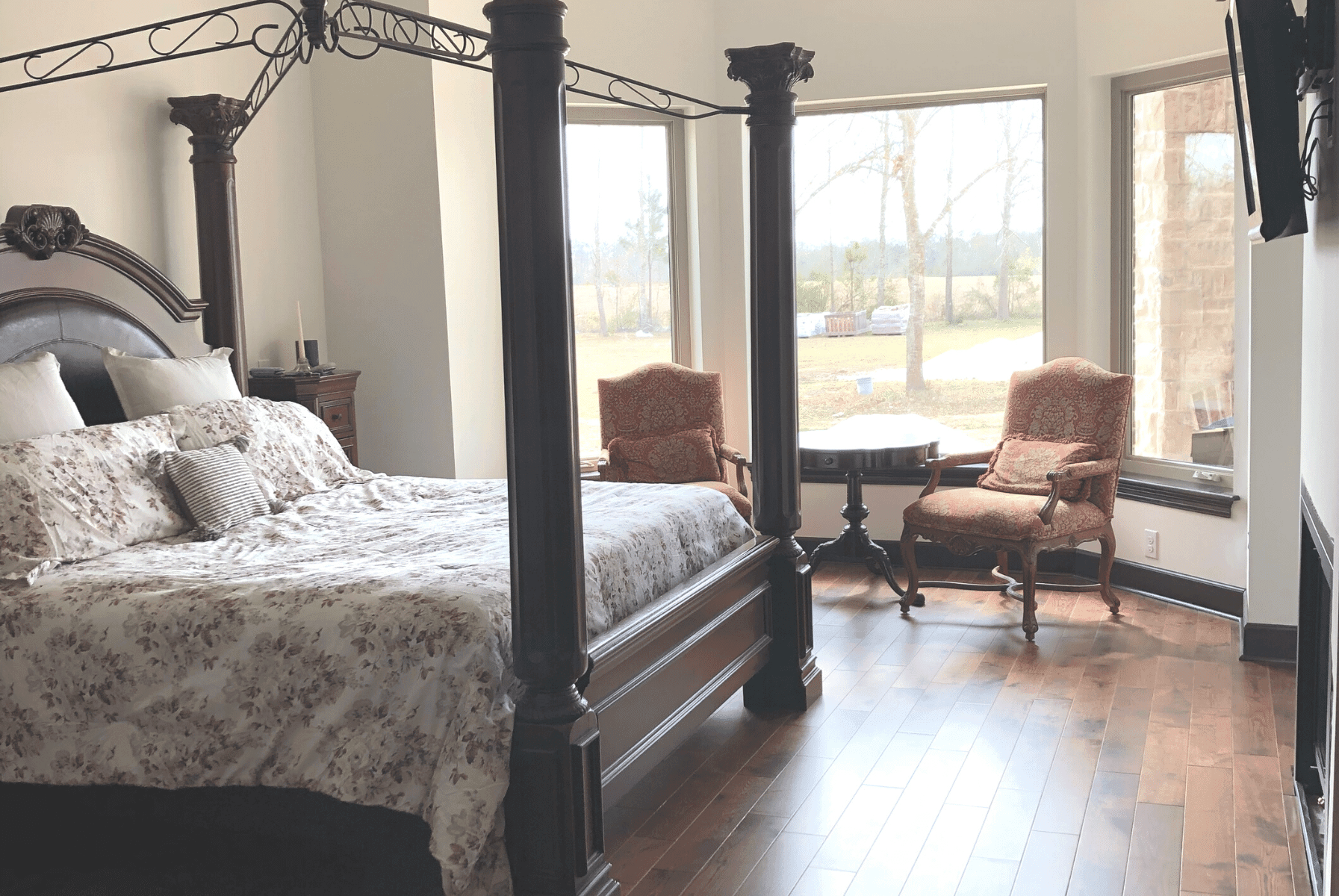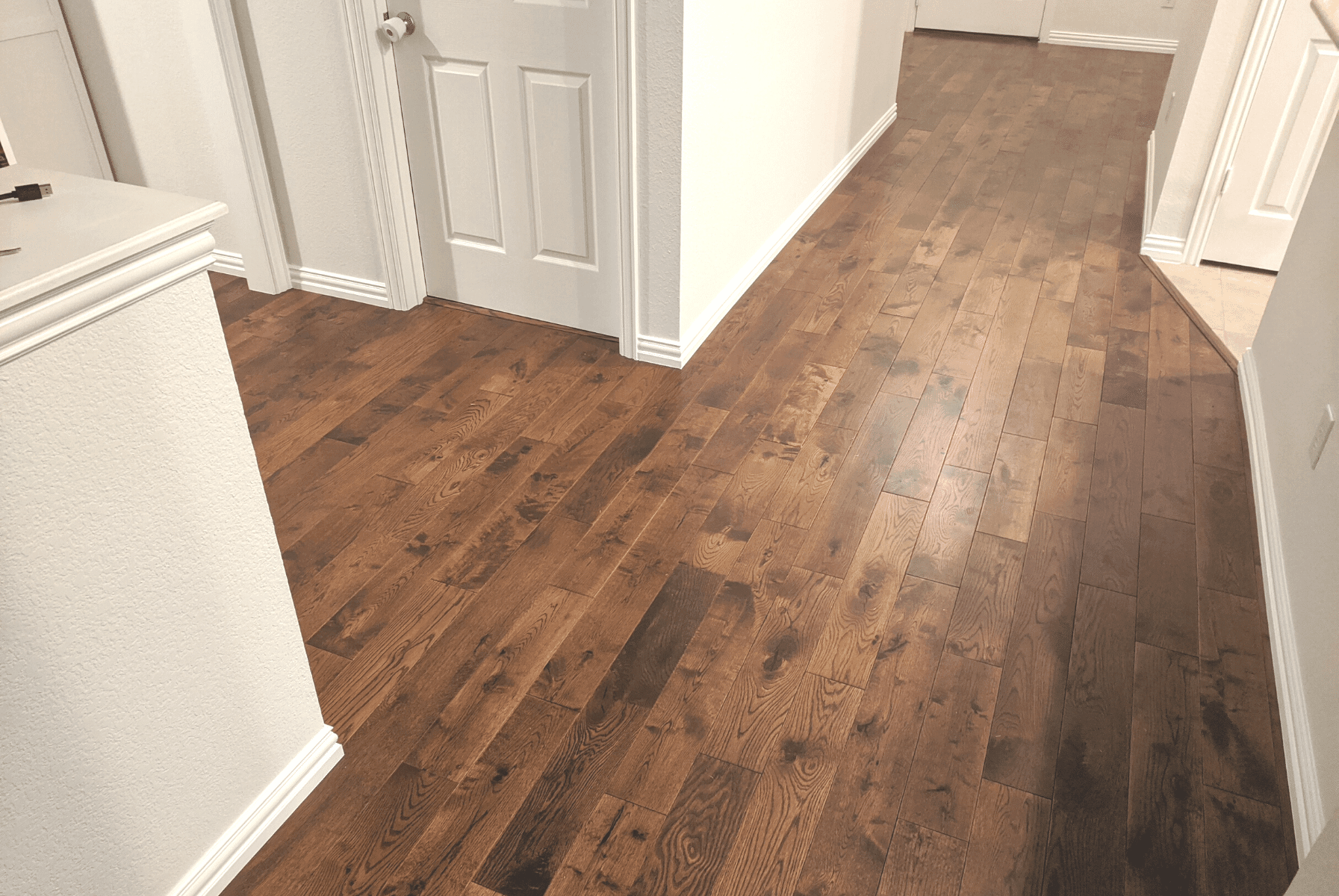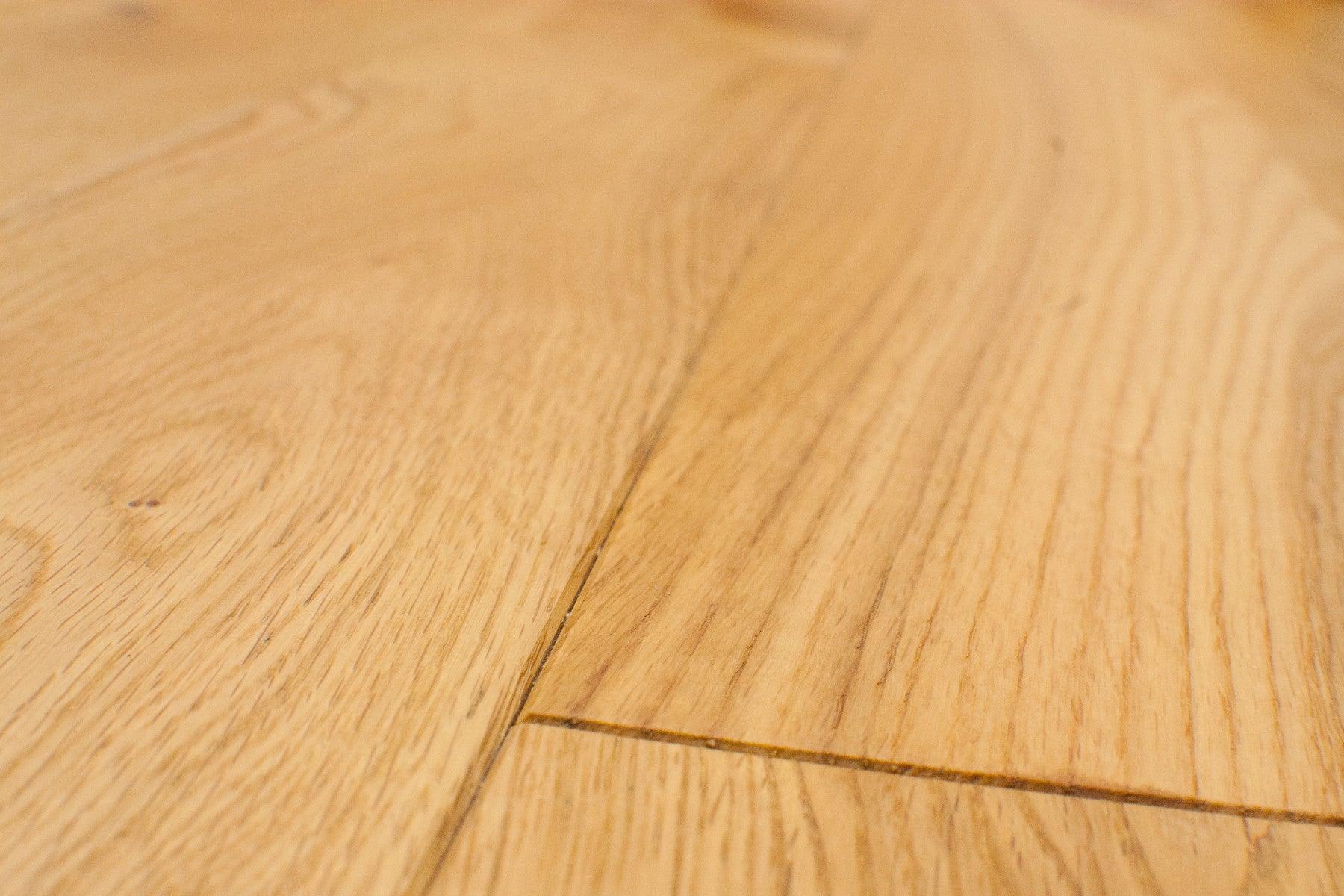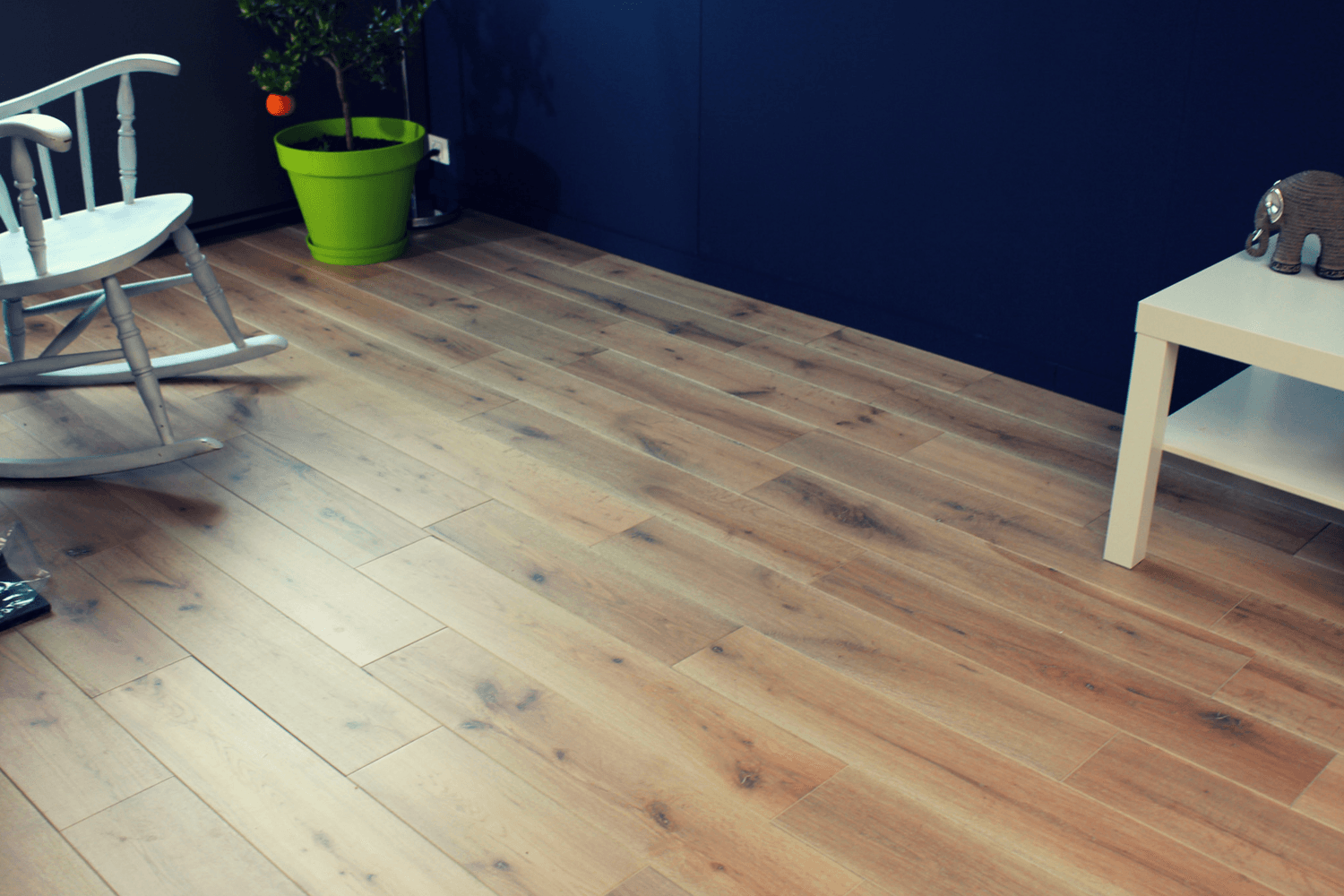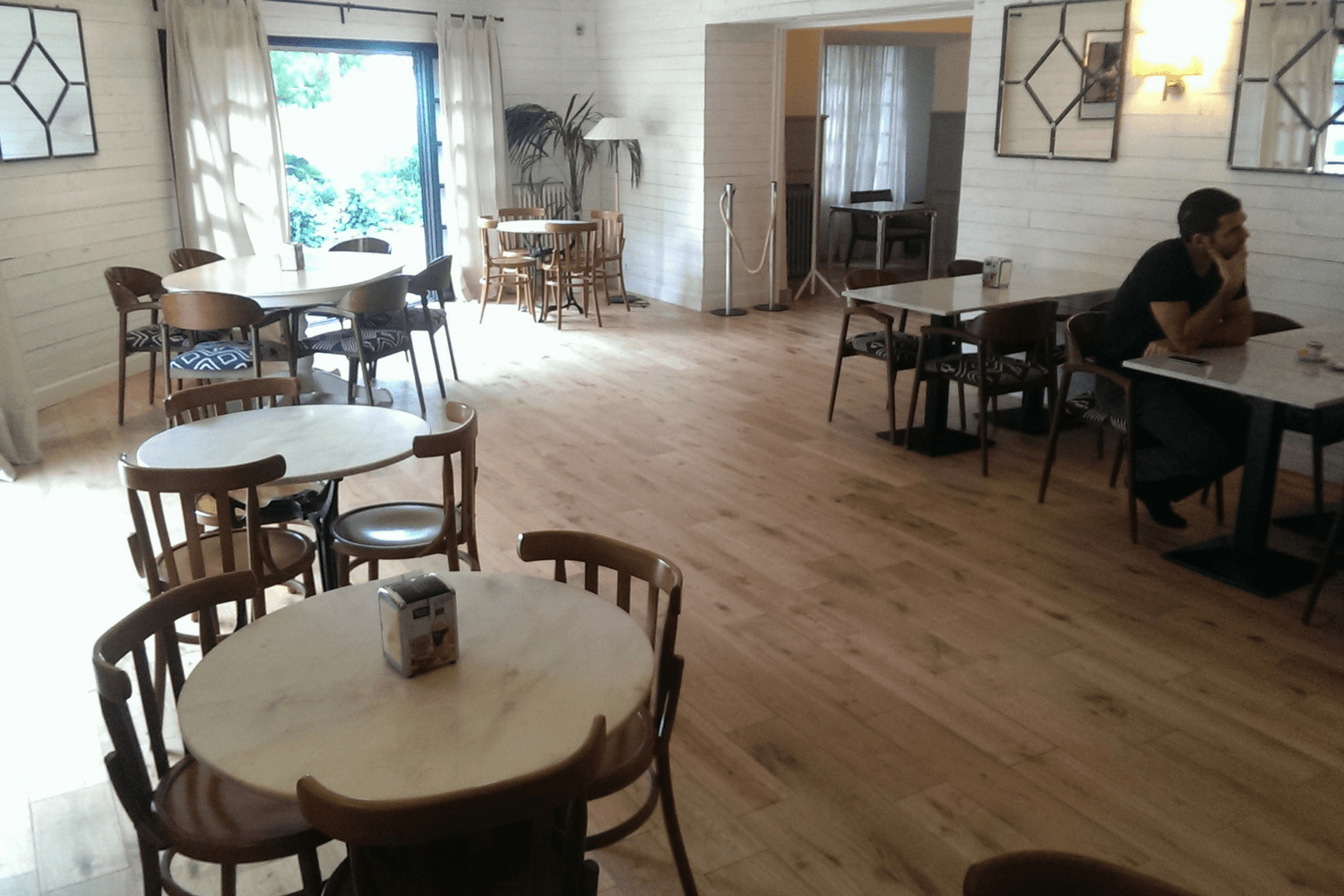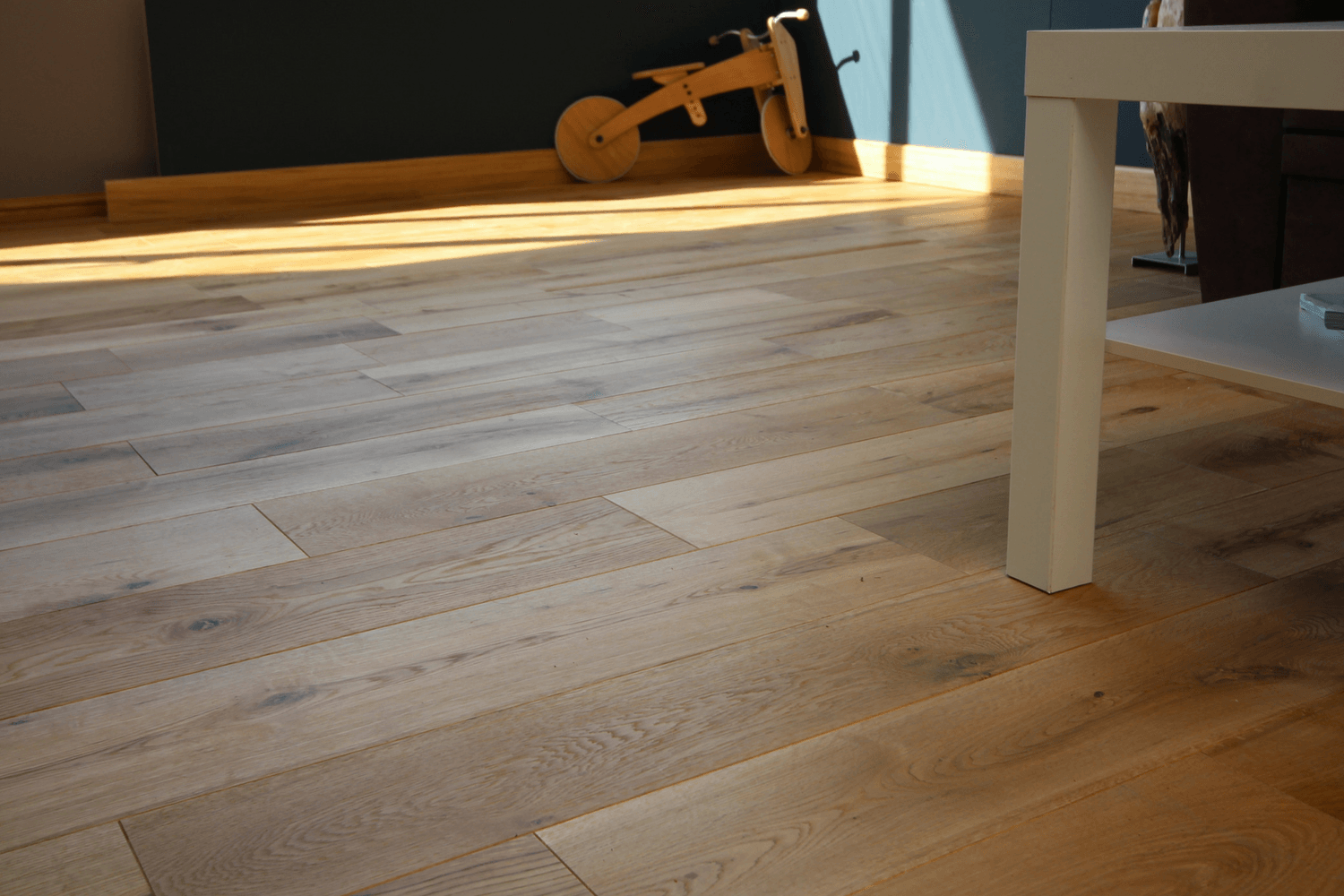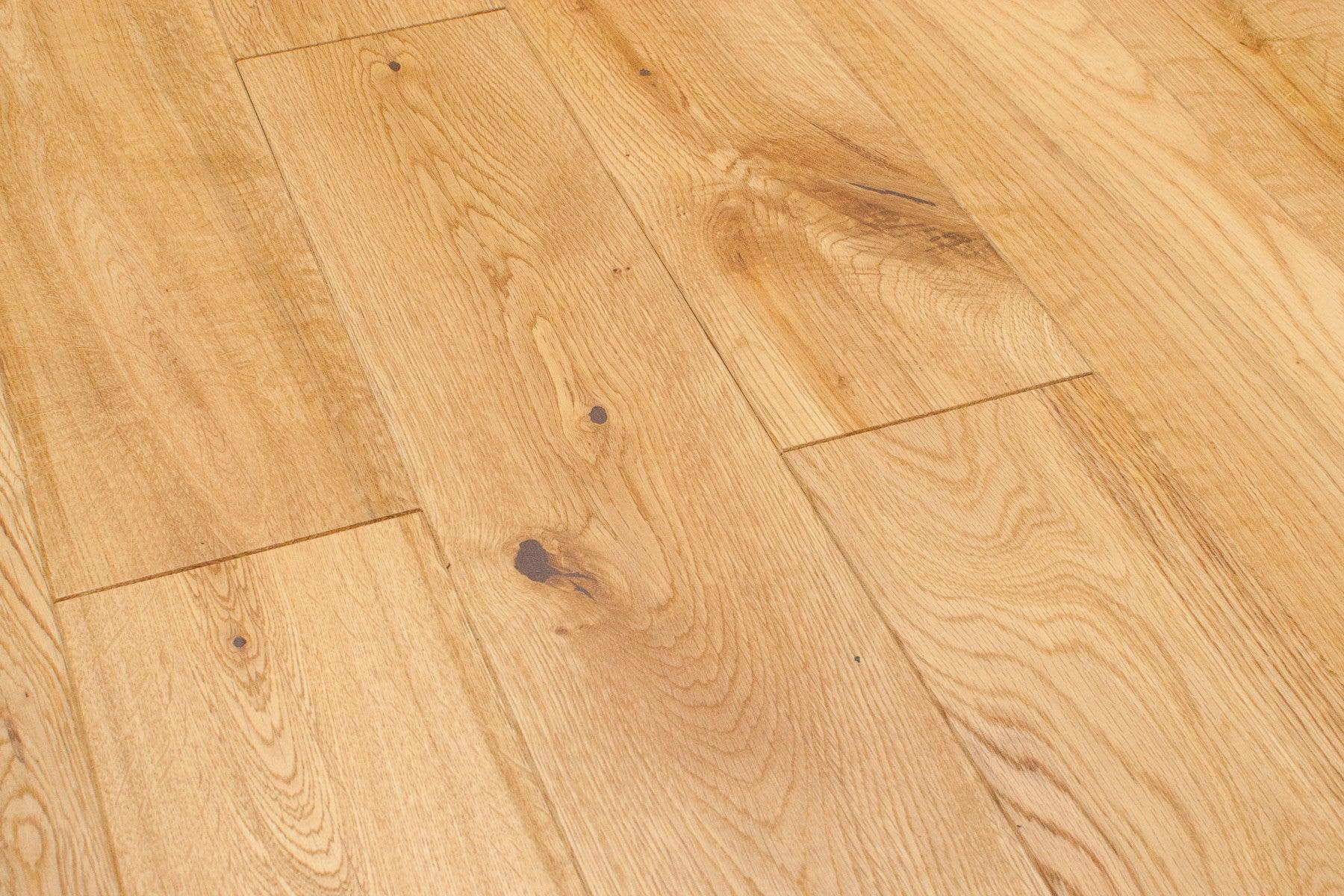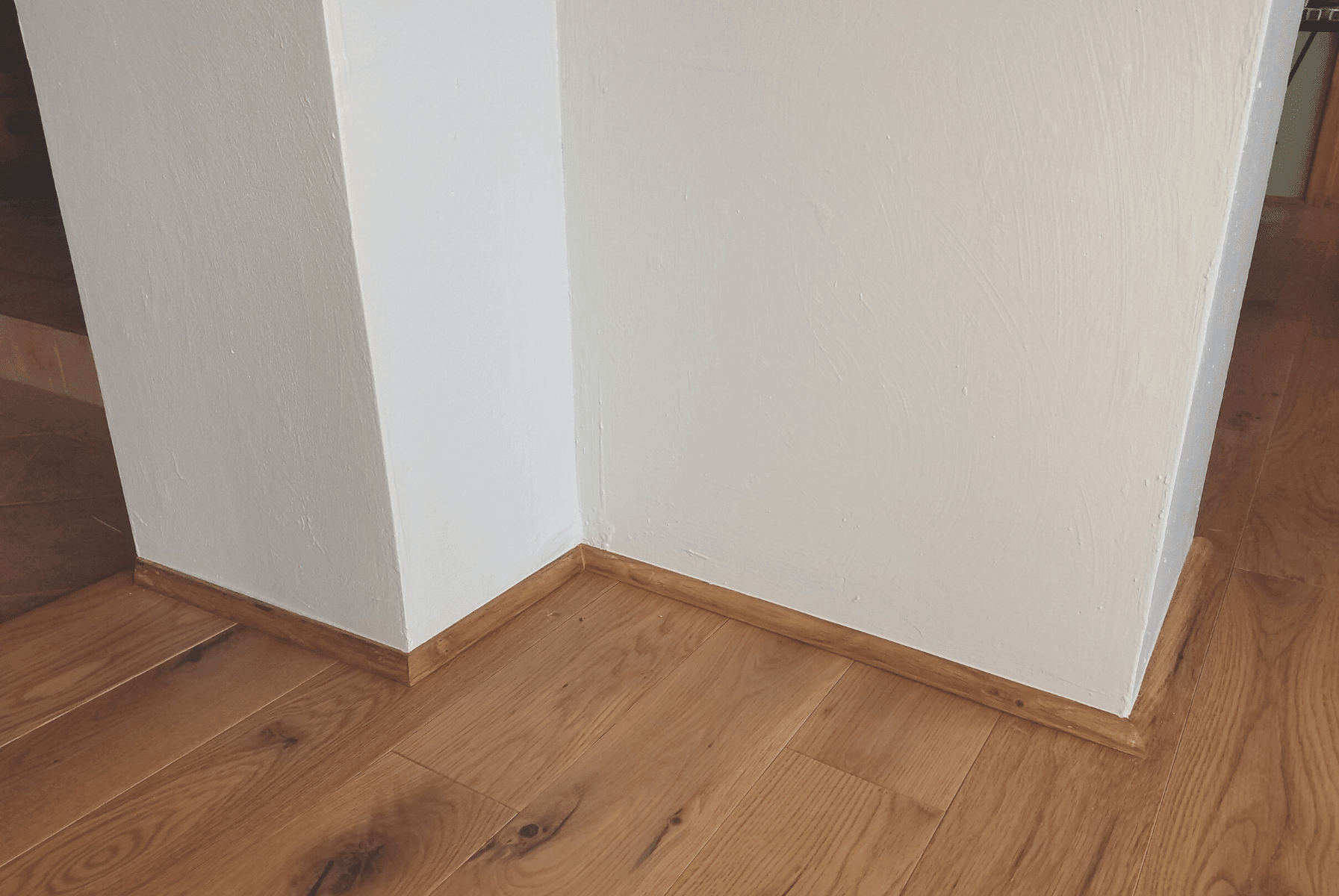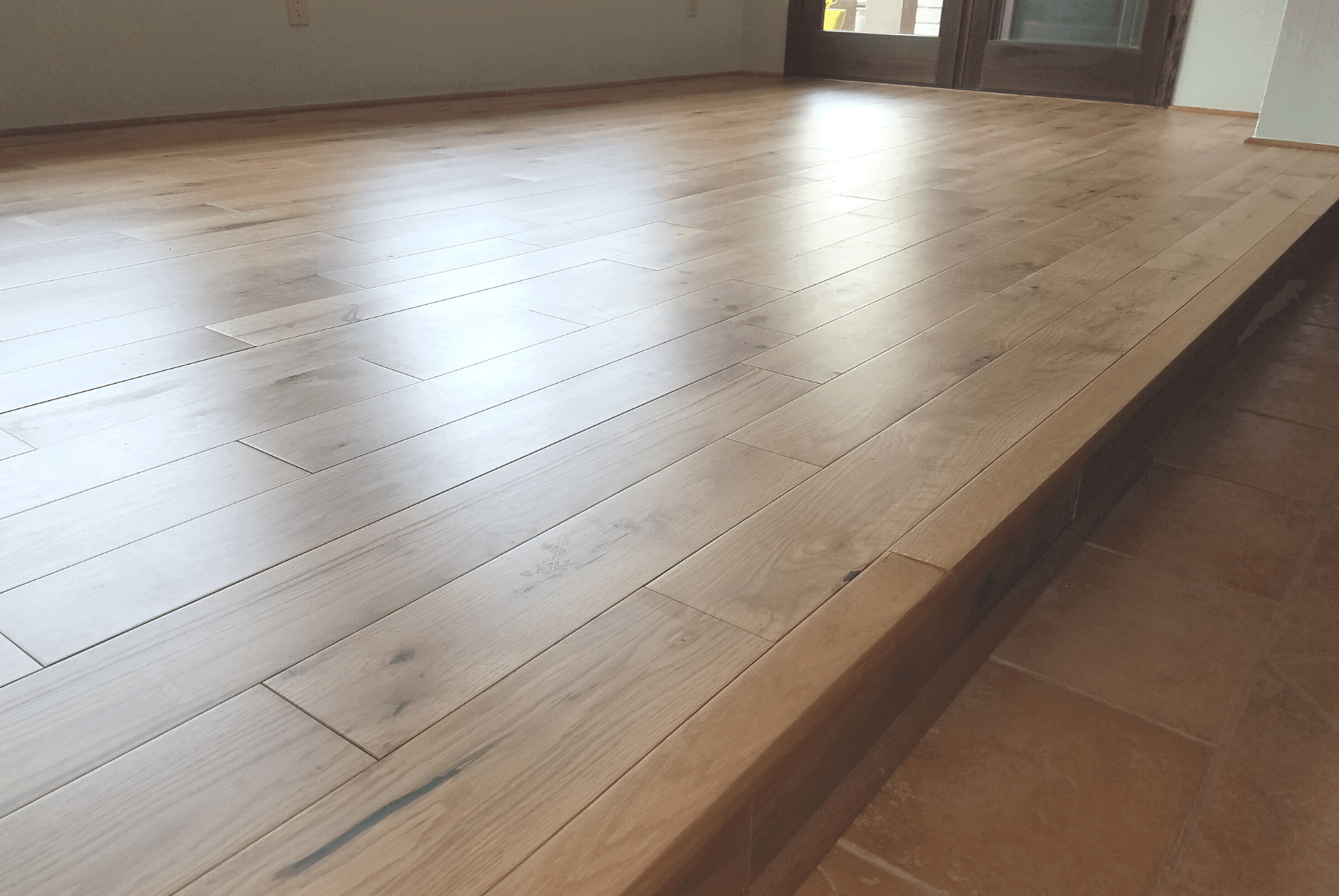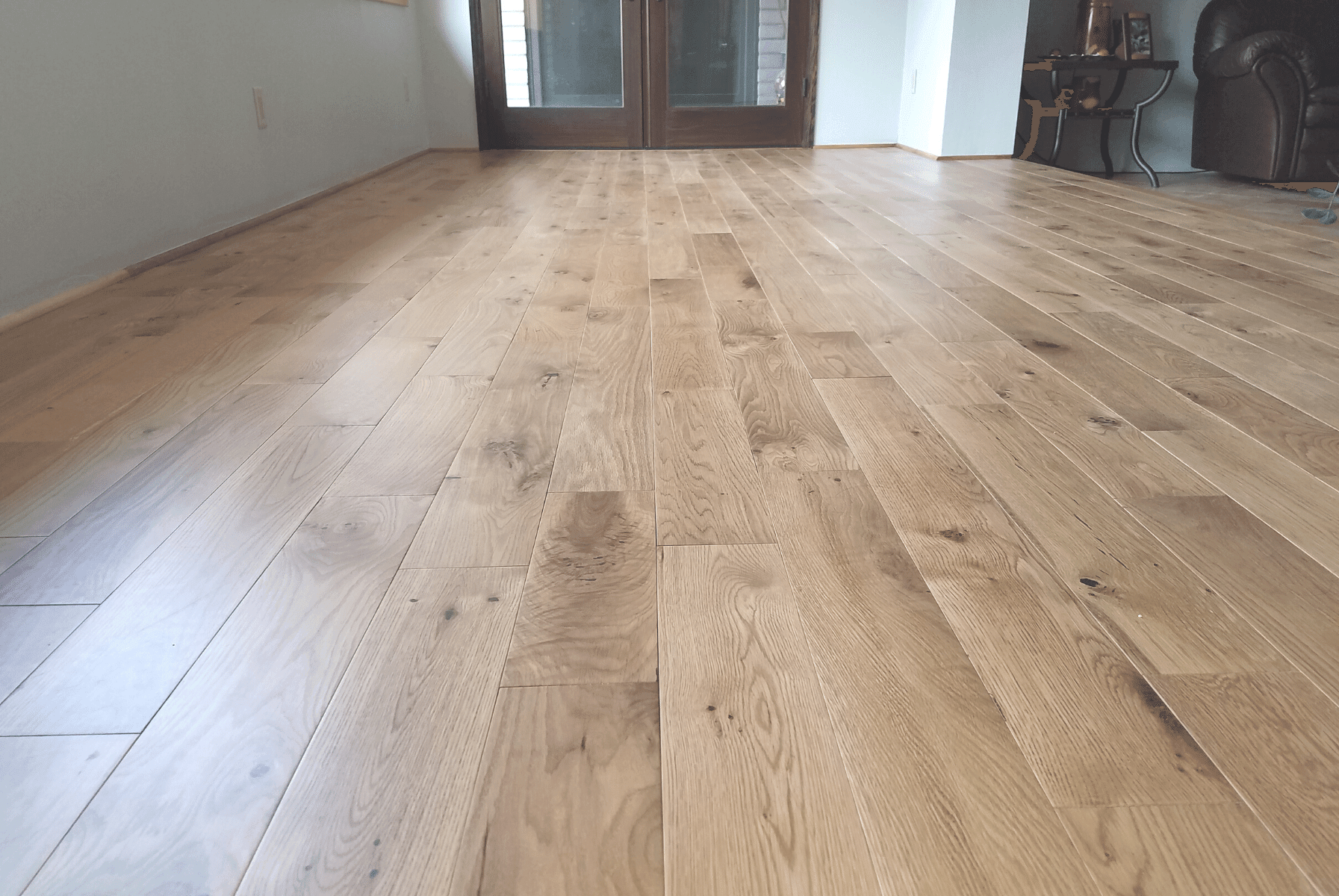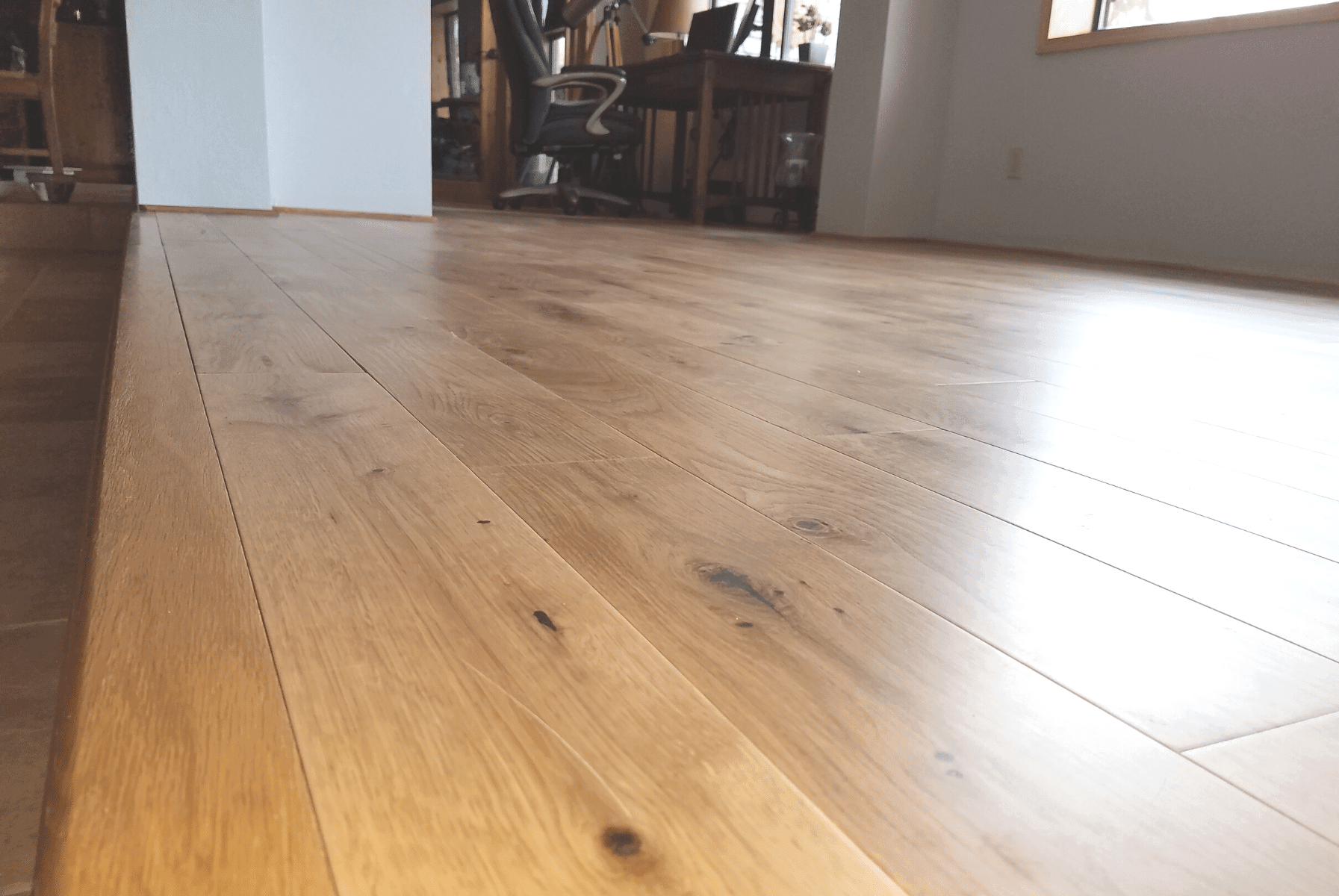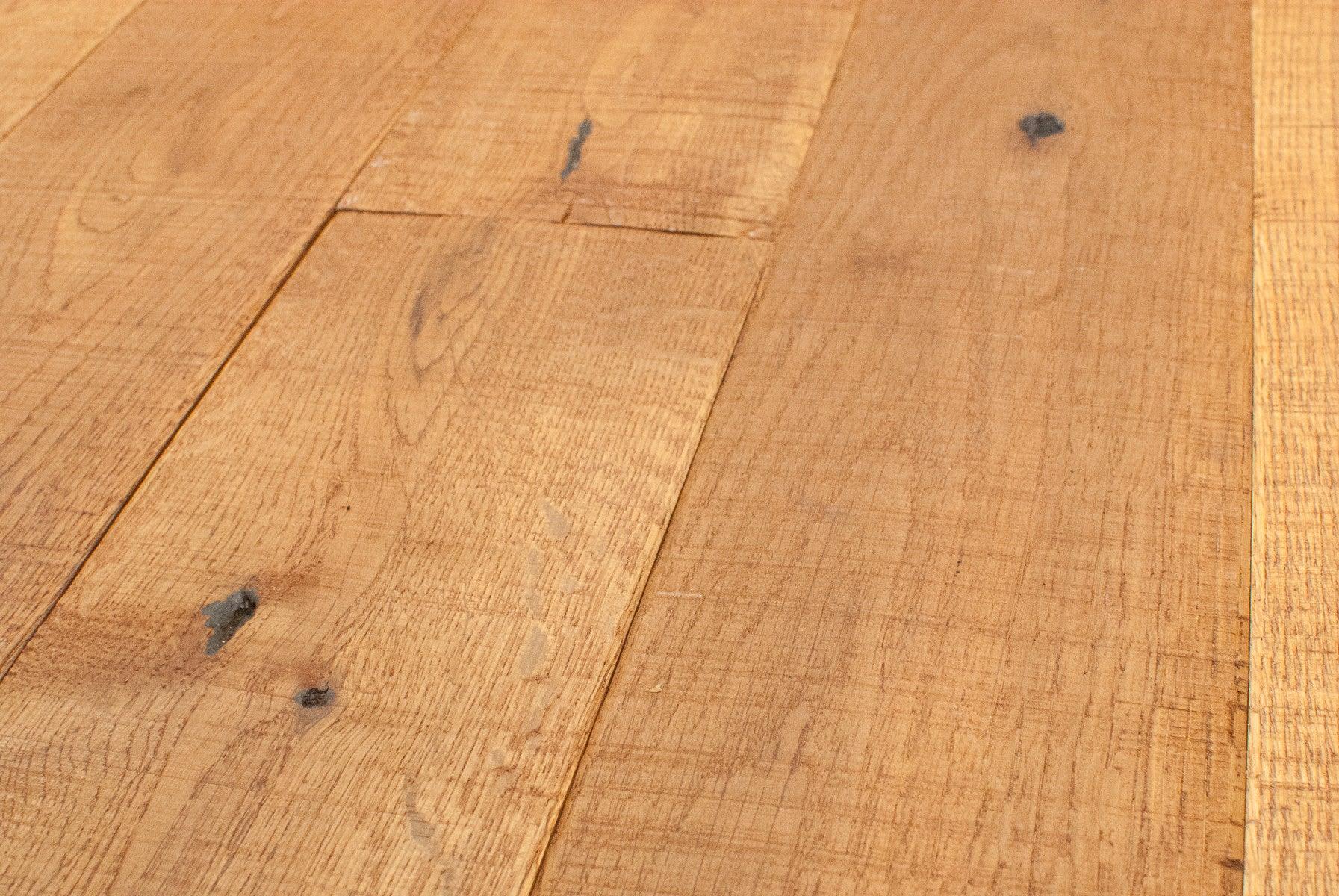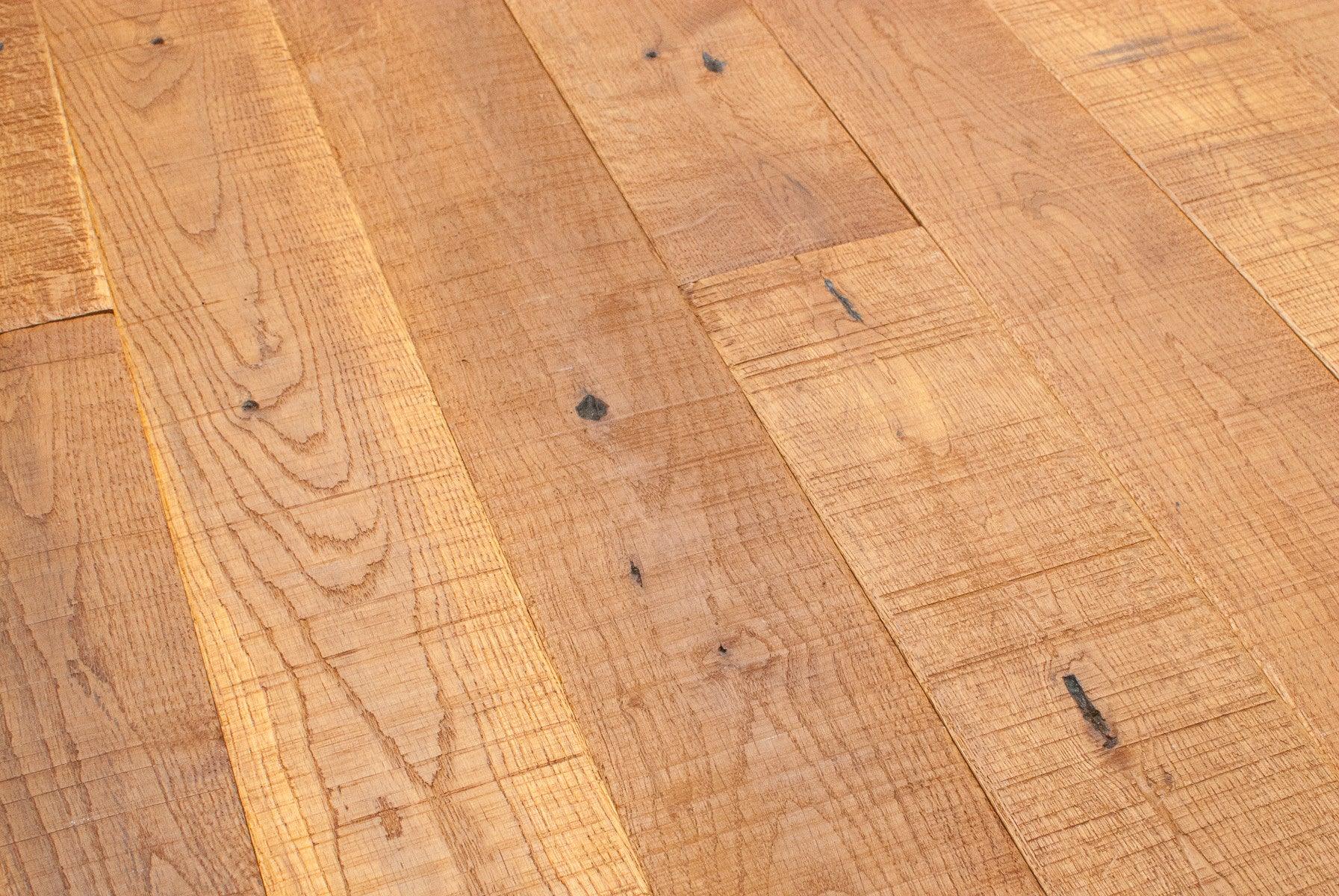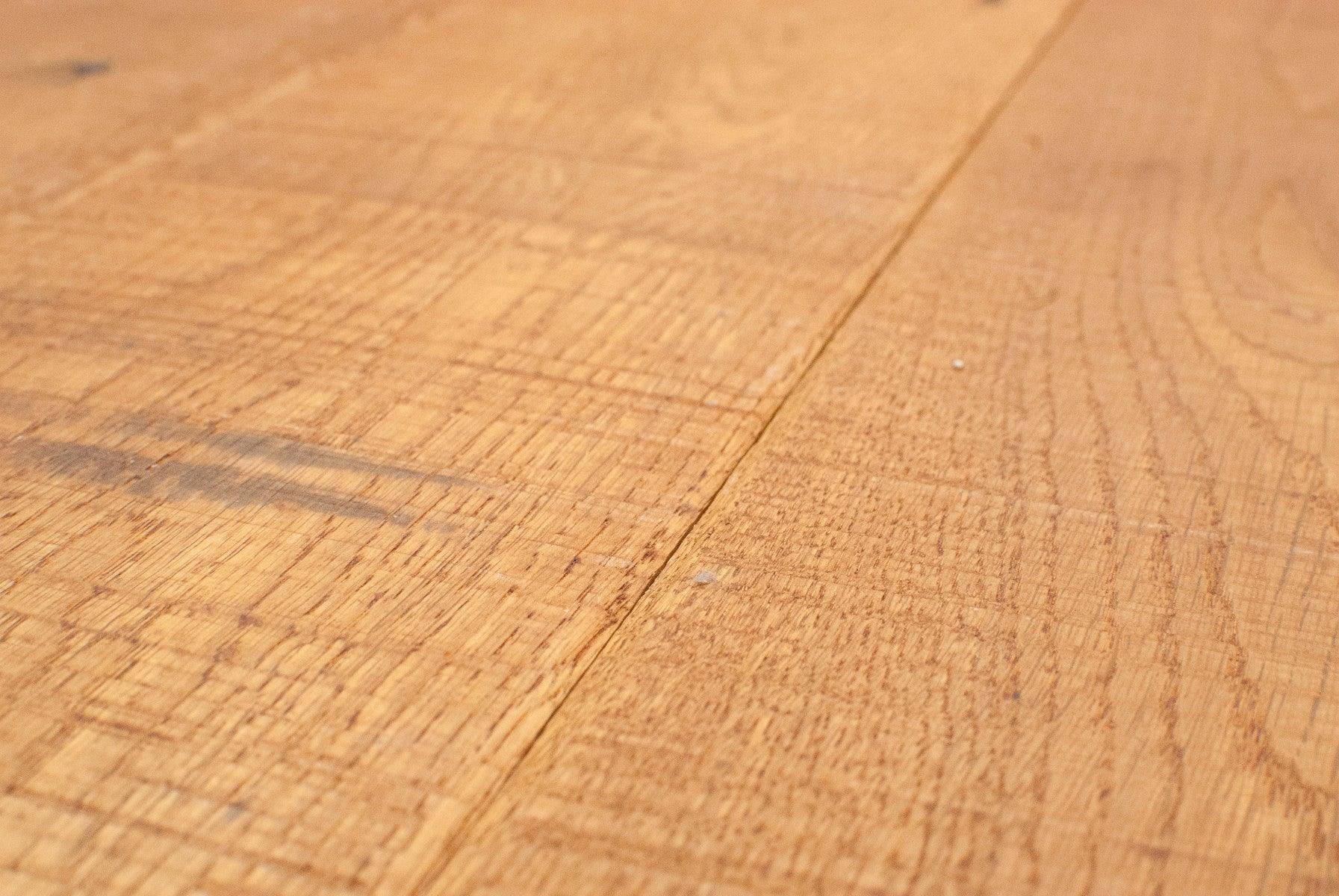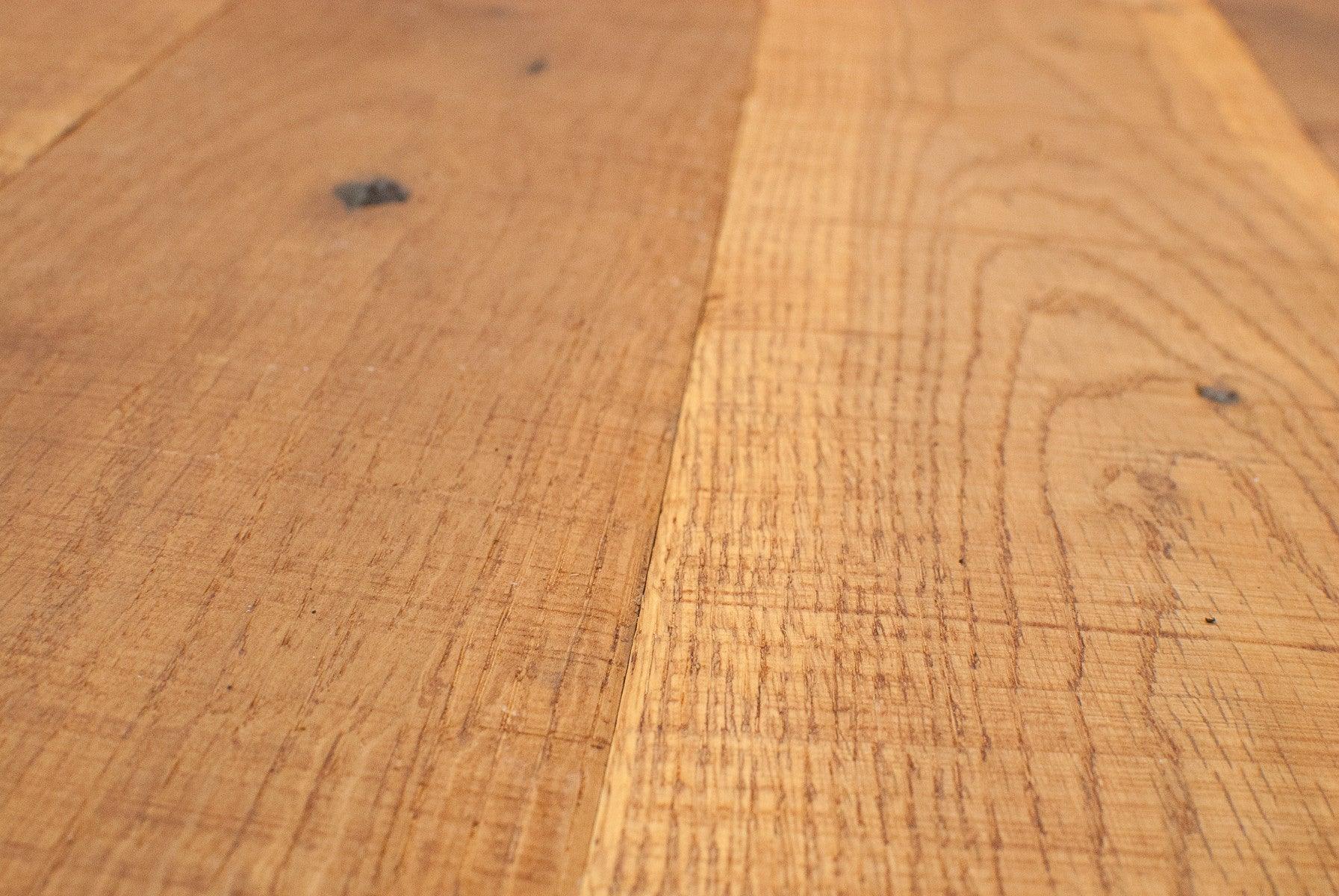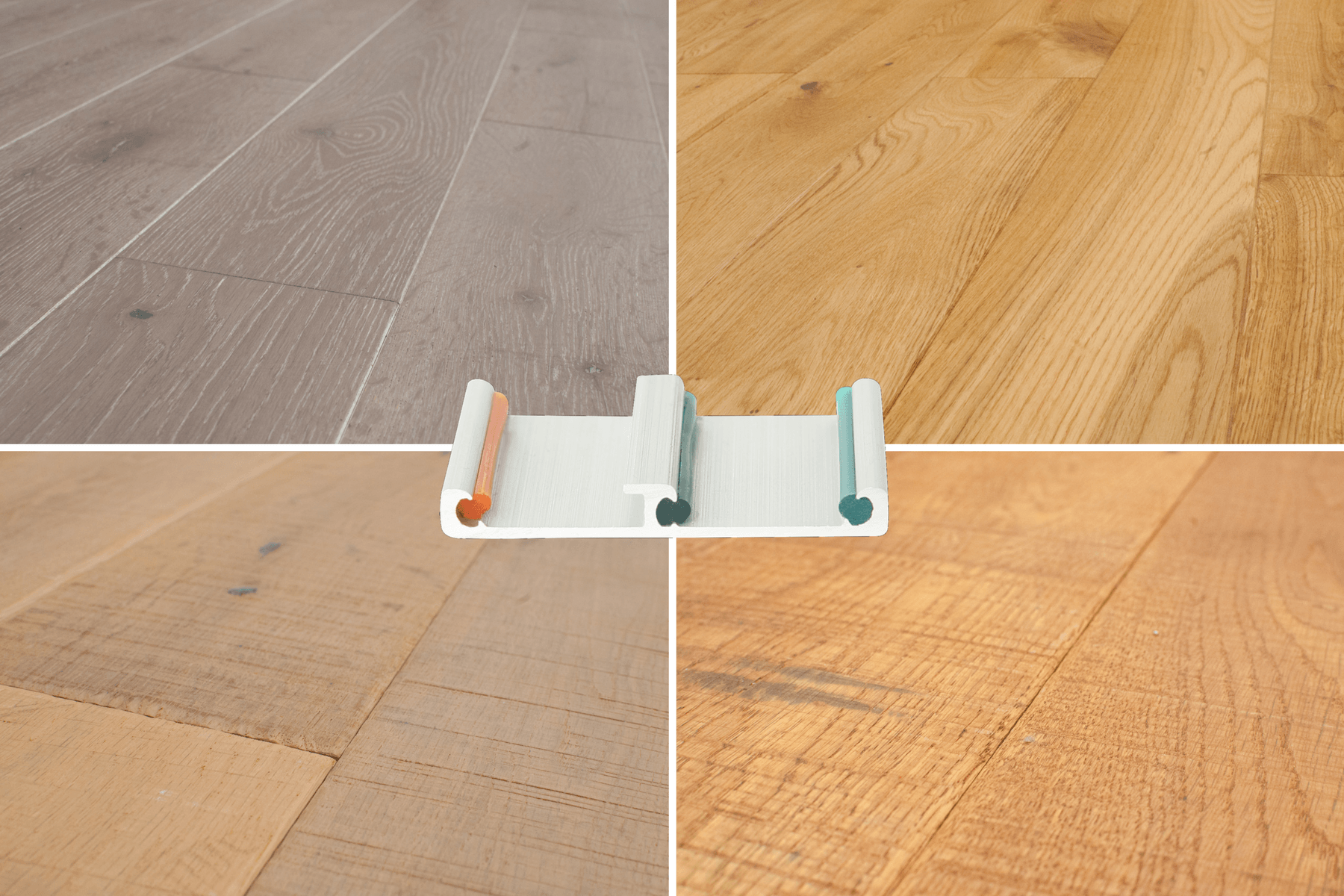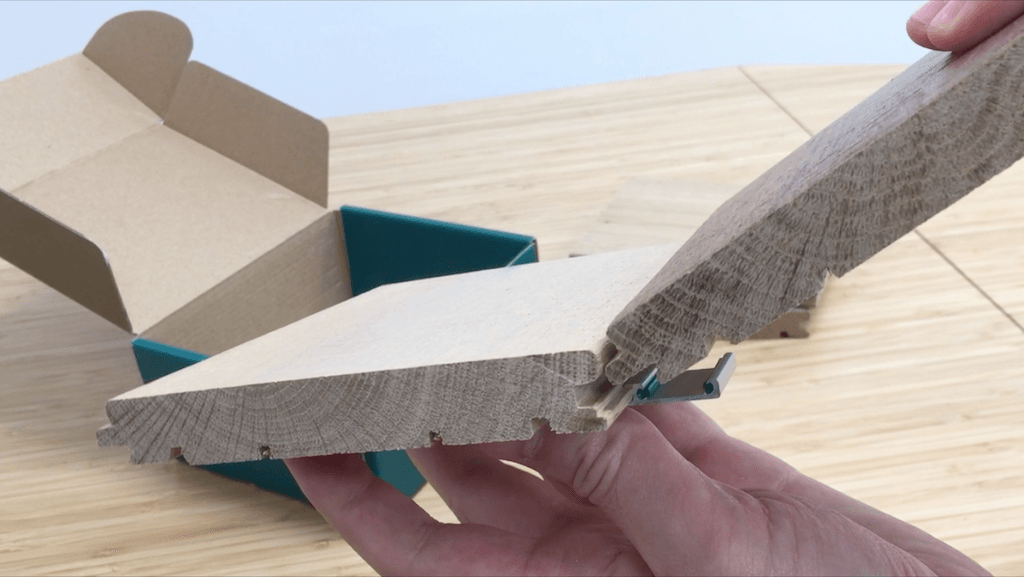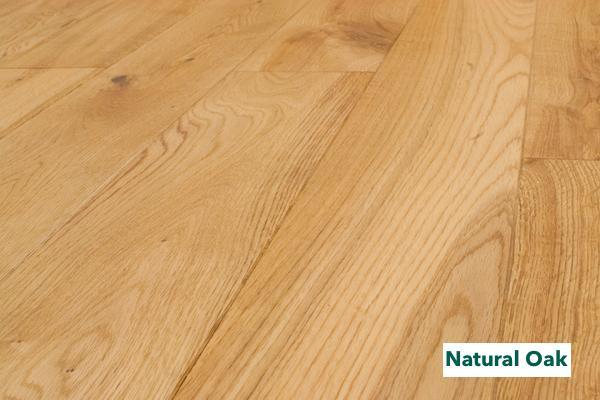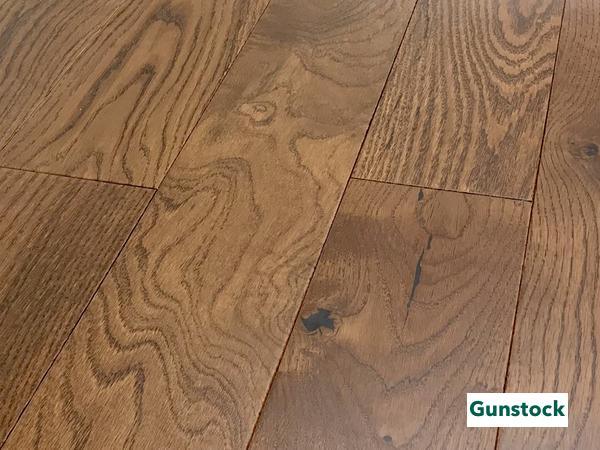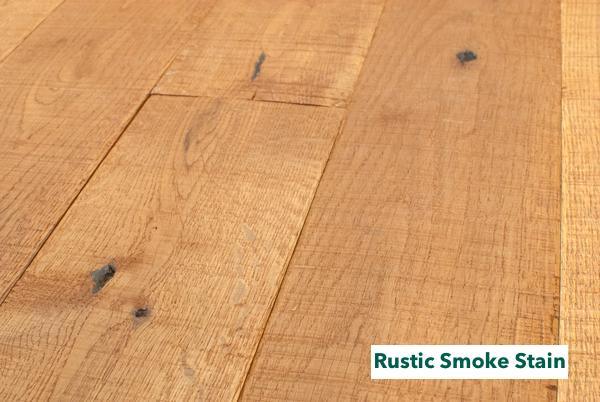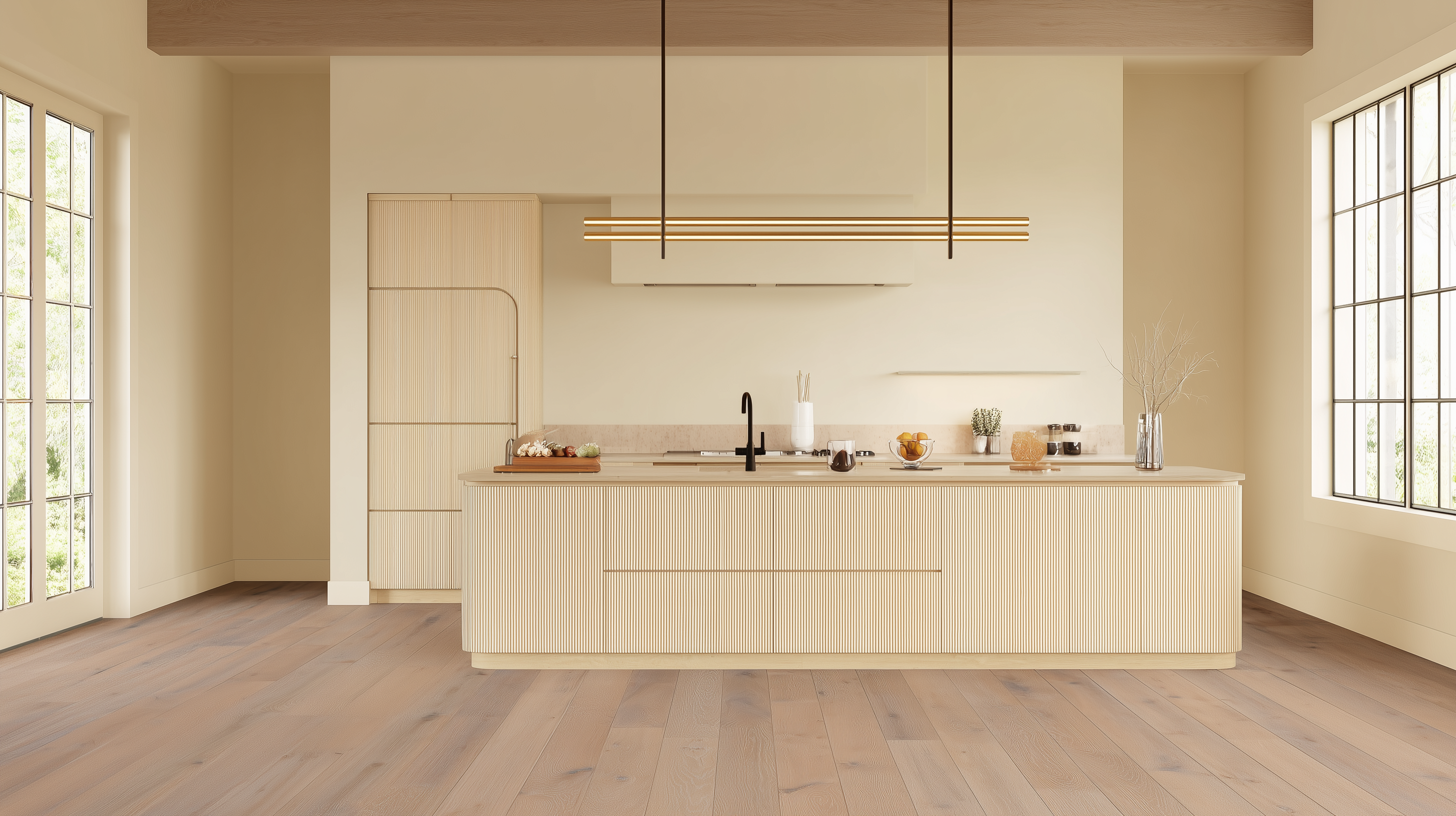The kitchen is where mornings begin and gatherings linger — it’s not just a place to cook, it’s a space that shapes memory and rhythm. So when it comes to flooring, beauty and performance must move in lockstep.
Wood flooring offers that balance effortlessly. Durable enough for real life yet refined enough to enhance the heart of your home, it brings natural depth and timeless character. And with today’s modern finishes, a wood kitchen floor can handle spills, traffic, and time — gracefully.
From rustic finishes to European patterns, here are ten wooden kitchen floor ideas designed to inspire your next renovation.
1. Unstained, Natural Wood for Subtle Warmth

Keep it simple and serene with raw wood tones sealed in a clear matte finish. Unstained floors reveal the grain and light reflection of real wood — perfect for softening the contrast of white cabinetry or minimalist kitchens.
2. Cool Grays with Rustic Roots

A soft gray wash creates a rustic yet grounded look that fits as comfortably in a farmhouse kitchen as it does in a sleek, modern flat. It’s a chameleon tone that pairs well with nearly every cabinet or backsplash colour.
3. Dark Tones That Anchor the Room

Rich chocolate or espresso-stained floors offer visual depth and instant contrast — especially stunning alongside white cabinetry, brushed metal fixtures, or marble countertops. Dark floors also have the practical benefit of hiding daily dust and wear.
4. Whitewashed Wood for Light and Space

One of the best ways to make your kitchen look bigger and brighter is to use a whitewashed floor. The white adds light to any area and gives a feeling of openness. It’s a fashionable look for beach homes and smaller galley kitchens with no natural light.
5. Birch: A Two-Tone Natural Wonder

Birch is a hardwood that comes in three species, Paper, Yellow, and Sweet Birch, which is harder than maple or oak. Birch is unique for North American hardwoods because of its two-tone appearance. The sapwood on the outside is light, while the heartwood tends to be a dark red or brown like cherry or walnut.
Decorators love the contrast in colors because it can match any cabinet or countertop.
6. Reclaimed Wood with Soul

No floor has more natural character than reclaimed wood. It’s been walked on, gouged, and dinged for years. Sanded and finished, every board tells a story and adds character you can’t get with a new wood floor. It is perfect for antique restorations or summer homes with lots of traffic.
7. Diagonal Layouts with Designer Impact

Who said that floors must be parallel to a wall? Dare to be different and install your wood kitchen floor diagonally. Typically, a diagonal floor runs at a 45° angle from the longest wall. It takes more time and material, but the results are stunningly beautiful. This technique works well with wider planks and can create a new, one-of-a-kind kitchen for any home.
Diagonal floors make an ordinary tract house stand out.
8. Herringbone Patterns that Echo European Design

Herringbone adds an elegance that you find in many European castles and stately homes. The boards join each other at a 90° angle. The boards are rectangular but installed by staggering the pieces so that one side touches the end of the other, resulting in an eye-catching zig-zag pattern.
It looks luxurious in any kitchen.
9. Chevron for Clean, Geometric Sophistication

A chevron pattern has a more organized look than herringbone. Unlike the boards in a herringbone floor, the ends of the boards have a 45° cut. When joined, they form a 90° point with a straight, continuous seam running the length of the floor.
It’s an elegant look fit for upscale kitchens, and it’s an excellent choice for narrow galley kitchens too.
10. Decorative Parquet: Where Craft Meets Art

Parquet floors allow for many designs and artistic touches. Parquet floors were hand-placed by craftsmen for nobility and elite families during the 16th century. Today, many parquet floors use modern construction techniques to create a variety of pre-made tiles.
They offer unlimited potential for floor designs and patterns.
Other Considerations
Hardwoods are the best choice for kitchens since the floor must endure the most traffic and spills. If you are curious to know how hard a wood species is, you can look at the Janka hardness test scale. It measures the density and hardness of all wood.
When coming up with wooden floor ideas for the kitchen, there are many variables. Here are some of the choices you need to make.
Species of Wood
The most popular wood is white oak, and it’s in the middle of the hardness scale along with hard maple and bamboo.
For comparison, black walnut and cherry are not as hard as white oak. Fir and yellow pine are even softer, about half as hard as oak.
Hardness is only one factor in choosing a species. It’s all about the grain and color of the wood. It should accent the walls and cabinets for a luxurious, seamless appearance.
The width and length of the boards also affect the final result. Wider planks work well in rustic kitchens while narrower boards look sleek, modern, and contemporary. Parquet floors use the smallest pieces of wood for an artistic, decorative style.
Types of Finishes
Most kitchens use a high-gloss polyurethane finish to protect the wood for a classic look. It’s easy to wipe up spills but requires the most maintenance to keep that beautiful shine scuff-free. However, it’s not the most practical. If you have a high traffic kitchen, lots of kids and pets, consider going with a satin or matte finish.
Technically speaking, luster is the term used for the shine of the finish. The measurement of how much light the finish reflects determines the luster, and it looks like this:
- High-gloss – 70%
- Semi-gloss – 55%
- Satin – 40%
- Matte – 25%
The lower the shine or glossy appearance, the more you can hide small scratches and dust. It’s more practical for daily living. High-gloss floors require much more maintenance and will need refinishing sooner.
Textures Spice Up Your Wooden Kitchen Floor
Textured wood floors have become an excellent way to enhance the look of kitchens. Rather than the traditional smooth, glossy finish, you can choose from hand-scraped, distressed, and reclaimed wood for a unique look. These styles of floors work well for restoring old homes or creating an antique look.
Hand-Scraped for An Old Wood Appearance
Hand-scraped wood adds a rugged, worn look to floors. The technique uses a blade to remove slightly varying amounts of wood from each plank. You can have a craftsman scrape the floor onsite or purchase pre-scraped lumber. Hand-scraping recreates the look of an original hand-built floor that’s a hundred years old or more.
Distressed Wood Brings Out the Natural Variations of Wood
Distressed wood is like hand-scraped in that it recreates an old-timey look. But distressing takes the wear look further by adding fake wormholes, deeper gouges, and possibly burn marks. There is more variation in the planks. It’s the perfect look for an antique restoration project.
For more information about textures read, 9 Examples of Seamless Wooden Flooring Texture.
Stencil and Paint for Artistic Effect
If you already have a hardwood floor but want to change the look on a budget, you have two options.
The first is painting the floor using stencils. It creates a custom, artistic look that takes the focus off the original floor and on the stencil design. You can incorporate patterns and colors to match the theme of the kitchen.
The other option is to paint the floor entirely. It’s less expensive than refinishing, but you’ll still need to do prep work to make the paint last. Painting gives you the option of using any color, pattern, or stencils. It provides a fantastic fresh look to a floor that may be too old or damaged to save otherwise.
To see how to take advantage of this technique, watch this video - How to Paint a Pre-finished Hardwood Floor.
If you want to put in the floor yourself, you have one more consideration.
Start with a Solid Oak, DIY-Friendly Floor
A wood kitchen floor is more than a design choice — it’s a foundation for daily life. It absorbs light, softens sound, and connects rooms with warmth and continuity.
Whether you lean minimalist or rustic, traditional or trend-forward, there’s a wooden floor to match your kitchen’s personality. And thanks to modern finishes and engineered simplicity, installing one is more achievable than ever.
So explore your options. Choose with intention. And let your floor become the quiet standout in the most-used room of your home.
Want a Kitchen Floor That’s DIY-Friendly and Designer-Approved?
Easiklip’s solid oak flooring makes it easier than ever to install beauty underfoot. No nails. No glue. Just durable, prefinished planks that lock into place — perfect for kitchens and perfect for you.
Order your sample pack here and start planning your ideal wooden kitchen floor.
